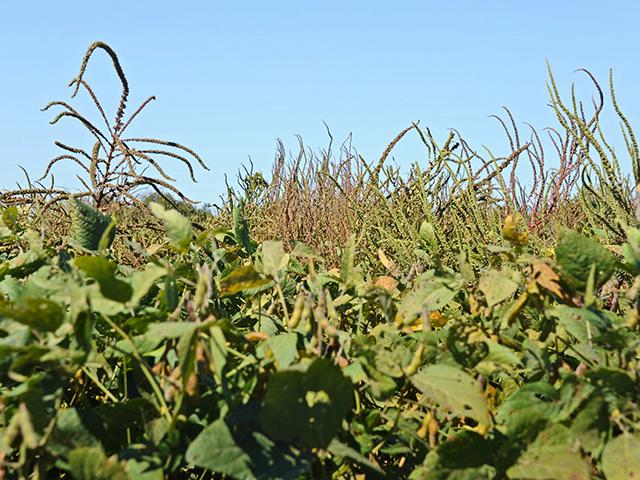Production Blog
What's the Superior Strategy for Hampering Herbicide Resistance?
JEFFERSON CITY, Mo. (DTN) -- Had Shakespeare's Prince Hamlet been a farmer trying to slow the steady advance of herbicide resistance in weeds today, his most famous line might have gone something more like, "To tank mix or not to tank mix? That is the question."
Farmers have a couple tactics they can employ when it comes to chemical weed control. They may choose to rotate the herbicides they apply, or they can tank mix them together. But which strategy is best?
This week, Emily Unglesbee and Claudio Rubione with the scientist-led GROW (Getting Rid of Weeds) network, answer this question in a new post on the group's website. Read the article below or online here: https://growiwm.org/…
*****
Tank Mixing or Herbicide Rotation: Which Strategy is Best?
P[L1] D[0x0] M[300x250] OOP[F] ADUNIT[] T[]
A new body of research suggests tank mixing different herbicide sites of action is more effective at delaying herbicide resistance than simply rotating herbicide sites of action each year. Even more importantly, that conclusion appears to be true for both target-site and non-target-site resistance mechanisms. (Confused about what those are? Here's a refresher: https://growiwm.org/…)
Learn why this tank mixing is such a valuable resistance prevention tool, and what this means for farmers' weed control strategies moving forward, in this GROW video featuring Patrick Tranel, professor of weed science at the University of Illinois: https://youtu.be/…
TRADE-OFFS & OTHER CONSIDERATIONS
To refresh, in target-site resistance, plants alter the binding site for herbicide, thus escaping that herbicide and any other herbicide that shares that site of action. But in non-target-site resistance, plants learn to dodge herbicides by rapidly metabolizing, storing or detoxifying the herbicide, a tactic which can be deployed against many different herbicide groups. That makes non-target-site resistance (often called metabolic resistance) a much tougher phenomenon to manage. Tranel explains why in another GROW video: https://youtu.be/…
Because tank mixing herbicide sites of action can select for weeds that are dodging all chemical control, and not just specific herbicide groups, the practice can actually select for non-target-site resistance, Tranel notes. But it still slows down the development of herbicide resistance overall, which makes it a worthwhile practice.
And keep in mind that not all weeds are created equal; some (such as Italian ryegrass) produce a smaller amount of seed compared to super-seeders like Palmer amaranth and waterhemp.
For weeds lower on the seed production side, research models suggest tank mixing herbicide sites of action could almost indefinitely prevent herbicide resistance from emerging, Tranel explains. But for prolific seed producers like Palmer amaranth, tank mixing --- while still superior to herbicide rotation or no rotation --- only delayed resistance for a little bit. That's a clear lesson on the limitations of chemical-only weed control, Tranel warns. Integrated weed management (IWM) is the only way forward for weeds like these, he explains.
"Use other non-chemical strategies to try to keep that population in check," he recommends. Once you've reduced populations and seed production with IWM tactics, adding diverse herbicide tank mixes to your weed control program will be much more effective for long-term resistance prevention.
To learn more from GROW about how herbicide resistance works, go here: https://growiwm.org/…
Find out how to prevent and manage herbicide resistance with IWM tactics here: https://growiwm.org/…
Jason Jenkins can be reached at jason.jenkins@dtn.com
Follow him on social platform X @JasonJenkinsDTN
(c) Copyright 2024 DTN, LLC. All rights reserved.






Comments
To comment, please Log In or Join our Community .